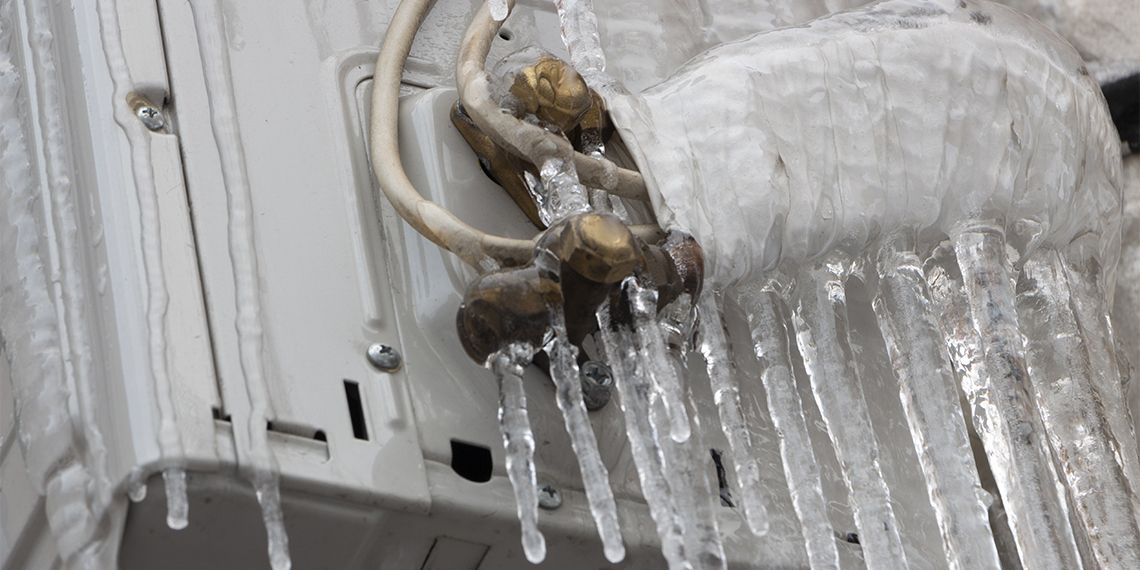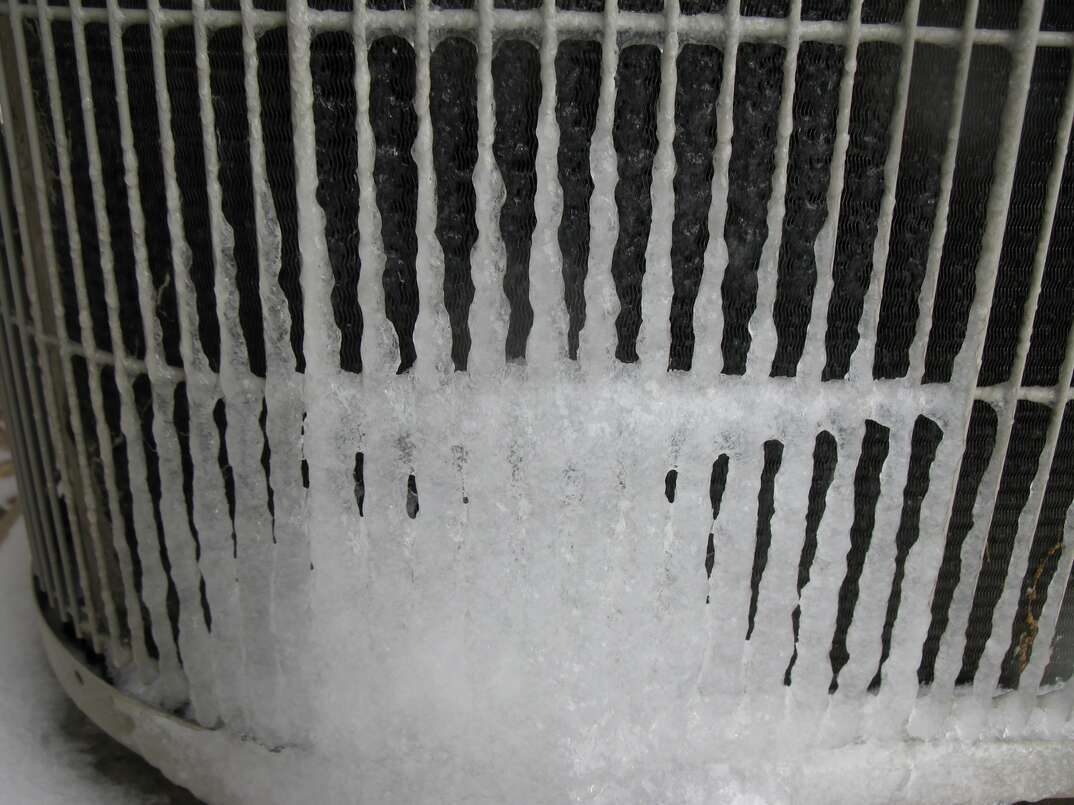Advice on Unfreezing a Frozen AC Pipe - Reinstating Normal Operation
Advice on Unfreezing a Frozen AC Pipe - Reinstating Normal Operation
Blog Article
How do you feel about What Causes AC Pipes To Freeze??

Introduction
Finding that your a/c pipe is frozen can be worrying, specifically throughout warm summer season when you rely upon your ac system one of the most. Understanding what to do in such a scenario is vital to stop additional damage to your air conditioning system and ensure your convenience inside your home.
Comprehending the Causes
Several variables can add to the freezing of an a/c pipeline. Understanding these reasons can help you attend to the issue properly.
Lack of Airflow
One typical cause of a frozen a/c pipe is inadequate airflow. When the air movement over the evaporator coil is restricted, it can trigger the coil to go down below freezing temperature level, causing ice development on the pipeline.
Reduced Refrigerant Levels
Insufficient refrigerant levels in your air conditioner system can also result in a frozen pipeline. Reduced cooling agent degrees can create the pressure in the system to drop, causing the freezing of wetness on the evaporator coil.
Winter Conditions
In chillier climates, freezing temperature levels outside can contribute to the cold of AC pipes. If your AC unit is not correctly protected or if there are leaks in the ductwork, cold air can penetrate the system, causing the pipe to ice up.
Dirty Air Filters
Filthy or blocked air filters can restrict air movement in your a/c system, bring about different concerns, including a frozen pipeline. It's essential to change or clean your air filterings system consistently to make sure appropriate air flow and protect against ice build-up.
Signs of a Frozen Air Conditioner Pipe
Identifying the indicators of a frozen AC pipe is critical for timely action.
Reduced Airflow
If you observe a substantial decline in air flow from your vents, it could show an icy pipeline.
Ice Buildup on the Pipe
Visible ice accumulation on the refrigerant line or the evaporator coil is a clear sign of a frozen air conditioning pipeline.
Odd Sounds from the Unit
Uncommon audios, such as hissing or gurgling, coming from your AC device can indicate that there's ice existing on the pipe.
Immediate Actions to Take
When faced with a frozen air conditioning pipe, it's important to act swiftly to avoid more damages to your air conditioning system.
Switching off the air conditioner
The very first step is to switch off your a/c to avoid the system from running and worsening the issue.
Checking for Blockages
Evaluate the area around the indoor device for any kind of blockages that might be blocking air flow, such as furniture or curtains.
Thawing the Pipe
You can use mild approaches like putting towels soaked in warm water around the icy pipeline to assist thaw it gradually.
Safety nets
Taking preventive measures can aid prevent future occurrences of an icy a/c pipe.
When DIY Methods Fail
If your attempts to thaw the pipe or address other issues are unsuccessful, it's time to contact an expert.
Value of Hiring a Professional HVAC Technician
A licensed HVAC specialist has the experience and devices needed to identify and repair problems with your air conditioner system securely and effectively.
Normal Maintenance Checks
Set up normal maintenance contact a professional HVAC specialist to guarantee that your air conditioner system is running effectively.
Changing Air Filters
Routinely replace or cleanse your air filters to prevent air flow restrictions and keep ideal efficiency.
Insulating Exposed Pipes
If your air conditioner pipes are revealed to cold temperature levels, think about shielding them to avoid freezing throughout cold weather.
Seeking Professional Help
If DIY techniques stop working to deal with the problem or if you're not sure concerning just how to proceed, it's best to seek aid from a qualified HVAC professional.
Verdict
Managing a frozen air conditioning pipe can be a frustrating experience, yet understanding how to react can aid lessen damage and recover comfort to your home. By understanding the reasons, recognizing the indicators, and taking prompt activity, you can properly address the problem and prevent future incidents.
What to Do If Your AC Line Is Frozen
Make Sure All Supply and Return Air Vents Are Open
If you notice problems with airflow, the first thing you should do is check your supply and return vents. Supply vents distribute clean, conditioned air throughout your home. As this air becomes stale, it’s pulled into the return vent, where it’s reconditioned before being sent back out through the supply vent.
When these vents are closed, air won’t flow in the home. Before examining your AC, check the vents in every room and ensure they’re all open.
Check for a Dirty Air Filter
Another possible cause of limited airflow is a dirty air filter. Your air conditioner’s filters catch elements you don’t want to breathe in, such as dirt and dust. Over time, filters can become clogged, ultimately blocking air from flowing in and out. The lack of airflow can then cause the entire coil to freeze and will completely restrict any air from moving through it. The AC may need to be powered off for one to two days to allow the coil to thaw after replacing the filter to allow proper functioning of the unit. This debris can also accumulate on your AC’s evaporator coil, requiring a more serious repair. In general, air filters should be cleaned regularly (about every two weeks).
Assess Your Outdoor Unit
In addition to checking your AC, assessing the outdoor unit is a good idea. Also known as the condensing unit, it works with your interior unit to release heat outside. An issue with the outdoor unit can result in rising internal temperatures.
Overgrown Shrubs or Clogged Leaves
From leaves and twigs to shrubs and debris, there’s no shortage of outdoor elements that can accumulate around your condensing unit. When these elements get lodged inside the unit, they can block airflow. Fortunately, removing the blockage can solve the problem.
Sounds of a Broken Fan
Shrubs and leaves aren’t the only things that can impede your outdoor unit’s airflow. If the fan is broken, the unit won’t be able to properly get rid of heat — which means the internal temperature won’t go down. First, make sure the fan is spinning. If it is, check for the following sounds of a broken fan:
Buzzing Rattling Screeching Hissing Clicking Preventative Measures
Nobody wants to deal with a frozen AC line. In addition to causing problems with your air conditioner, they require professional repairs. On the bright side, there are preventative measures you can take to help ensure this issue doesn’t arise in the first place.
https://www.coopergreenteam.com/blog/what-to-do-if-ac-line-frozen

Do you appreciate more info about How can I fix an air conditioner’s frozen pipe?? Post a review down below. We would be pleased to know your views about this page. We are looking forward that you visit us again in the future. Make sure you take the opportunity to distribute this entry if you enjoyed reading it. I truly appreciate reading our article about How can I fix an air conditioner’s frozen pipe?.
Or Book Technician Here Report this page